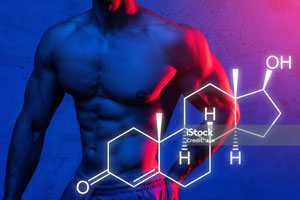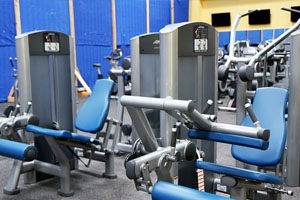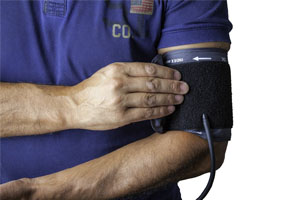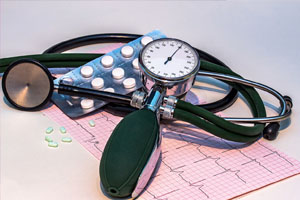Discover comprehensive insights into cardiac health, including the causes, symptoms, and effective prevention strategies Learn how to maintain a healthy heart and reduce the risk of cardiac events through lifestyle modifications and early detection
Understanding the difference between cardiac arrest and heart attack is crucial for recognizing the signs and symptoms, seeking timely medical attention, and potentially saving lives. While these terms are sometimes used interchangeably, they refer to distinct cardiac events with different causes and implications.
Cardiac arrest and heart attack are both serious medical emergencies that require immediate attention, but they involve different disruptions in the heart's functioning. Cardiac arrest is characterized by the sudden loss of heart function and circulation, often resulting from an electrical malfunction in the heart. On the other hand, a heart attack occurs when there is a blockage in the blood flow to the heart muscle, usually caused by a clot or a buildup of plaque in the coronary arteries.
In this article, we will delve into the nuances of cardiac arrest and heart attack, exploring their causes, symptoms, diagnostic methods, and appropriate medical interventions. By gaining a deeper understanding of these conditions, you will be better equipped to recognize the warning signs, respond effectively, and potentially save lives in critical situations.

What is Cardiac Arrest?
Cardiac arrest refers to the sudden loss of heart function and circulation. It occurs when the heart's electrical system malfunctions, causing an irregular heartbeat (arrhythmia). This abnormal rhythm disrupts the heart's pumping action, preventing it from supplying oxygen-rich blood to the brain, lungs, and other vital organs.
Cardiac arrest can occur suddenly and without warning. It is a life-threatening emergency that requires immediate medical attention. Common causes of cardiac arrest include coronary artery disease, heart attack, heart failure, certain inherited conditions, electrolyte imbalances, drug overdose, and severe trauma.
During cardiac arrest, the person may collapse, lose consciousness, and stop breathing. Without prompt intervention, brain damage and death can occur within minutes. Cardiopulmonary resuscitation (CPR) and the use of an automated external defibrillator (AED) are crucial in restoring the heart's normal rhythm and increasing the chances of survival.
It's important to note that cardiac arrest is different from a heart attack. While a heart attack involves a blockage in the blood vessels supplying the heart, cardiac arrest is a sudden cessation of the heart's pumping function. Prompt recognition and immediate response are vital in treating cardiac arrest and improving outcomes.
What is a Heart Attack?
A heart attack, also known as a myocardial infarction, occurs when there is a blockage in the blood flow to the heart muscle. This blockage is typically caused by a blood clot that forms in one of the coronary arteries, which supply oxygen-rich blood to the heart. The clot obstructs the flow of blood, leading to damage or death of the heart muscle.
The most common cause of a heart attack is the buildup of fatty deposits called plaque in the coronary arteries. Over time, this plaque can rupture and form a blood clot, significantly reducing or completely blocking the blood flow. Other factors that can contribute to a heart attack include smoking, high blood pressure, high cholesterol levels, diabetes, obesity, and a sedentary lifestyle.
Symptoms of a heart attack can vary but commonly include chest pain or discomfort, which may radiate to the arm, jaw, back, or stomach. Shortness of breath, sweating, nausea, lightheadedness, and anxiety are also possible symptoms. It's essential to note that not all heart attacks present with severe chest pain, and symptoms can be different for men and women.
Prompt medical intervention is critical during a heart attack to restore blood flow to the heart muscle and minimize damage. Treatment options may include medications to dissolve the clot, angioplasty with stent placement to open the blocked artery, or in severe cases, coronary artery bypass surgery (CABG). Recognizing the symptoms, calling emergency services, and seeking immediate medical care can significantly improve the chances of survival and reduce long-term complications.
Key Differences between Cardiac Arrest and Heart Attack
Although cardiac arrest and heart attack are both serious cardiac events, it's important to understand their key differences. These conditions have distinct causes, mechanisms, and immediate risks.
Cardiac arrest is the sudden loss of heart function and circulation. It is primarily caused by an electrical disturbance in the heart, leading to an irregular heartbeat (arrhythmia). This disruption prevents the heart from pumping blood effectively to the body's organs and tissues. Without immediate intervention, cardiac arrest can quickly result in loss of consciousness, cessation of breathing, and death.
In contrast, a heart attack occurs when blood flow to the heart muscle is blocked. This blockage typically happens due to a blood clot forming in one of the coronary arteries, which supply oxygen-rich blood to the heart. The blockage cuts off the blood supply to a portion of the heart, causing damage or death to the affected muscle. Common symptoms of a heart attack include chest pain or discomfort, shortness of breath, and nausea.
While a heart attack can lead to cardiac arrest, it is essential to note that not all heart attacks result in cardiac arrest. Cardiac arrest, on the other hand, can occur independently of a heart attack, often due to underlying heart conditions, electrolyte imbalances, drug overdose, or trauma.
Immediate risks associated with cardiac arrest include brain damage and death if not treated promptly. In contrast, a heart attack can cause permanent damage to the heart muscle, leading to complications such as heart failure or arrhythmias. Both conditions require urgent medical attention, but the immediate risks and necessary interventions differ.
Recognizing the difference between cardiac arrest and heart attack is crucial for appropriate responses and seeking appropriate medical care. Understanding the unique characteristics of each condition can help individuals and bystanders take quick action and potentially save lives.
Symptoms and Warning Signs
Recognizing the symptoms and warning signs of cardiac arrest and heart attack is crucial for prompt medical intervention and potentially saving lives. While there are some overlapping symptoms, each condition has distinct indicators.
Symptoms of cardiac arrest include a sudden loss of consciousness, absence of pulse, and cessation of breathing. The person experiencing cardiac arrest may collapse unexpectedly and show no signs of responsiveness. Immediate action is vital, and starting cardiopulmonary resuscitation (CPR) and using an automated external defibrillator (AED) can significantly improve the chances of survival.
On the other hand, heart attack symptoms often include chest pain or discomfort that may radiate to the arm, jaw, back, or stomach. The pain can be intense and last for several minutes. Other symptoms may include shortness of breath, sweating, nausea, lightheadedness, and anxiety. It's important to note that heart attack symptoms can vary among individuals, and some people may experience atypical symptoms, especially women.
If you or someone around you experiences symptoms that suggest cardiac arrest or a heart attack, it is crucial to call emergency services immediately. Time is of the essence, and seeking prompt medical attention can make a significant difference in the outcome.
It's important to remember that not all symptoms are the same for everyone, and some individuals may experience subtle or atypical symptoms. If in doubt, it is always better to err on the side of caution and seek medical help.
Diagnosis and Medical Intervention
Accurate diagnosis and timely medical intervention are crucial in managing cardiac arrest and heart attack. Healthcare professionals employ various methods to diagnose these conditions and provide appropriate treatment.
In cases of cardiac arrest, the diagnosis is often made based on the person's clinical presentation, such as sudden loss of consciousness, absence of pulse, and cessation of breathing. Immediate cardiopulmonary resuscitation (CPR) and the use of an automated external defibrillator (AED) are typically initiated to restore a normal heart rhythm. Once stabilized, further investigations, such as electrocardiogram (ECG), blood tests, and imaging studies, may be conducted to determine the underlying cause and guide subsequent treatment.
Diagnosing a heart attack involves a combination of clinical evaluation, medical history, and diagnostic tests. The healthcare provider may perform an electrocardiogram (ECG) to assess the heart's electrical activity and look for specific patterns indicating a heart attack. Blood tests, such as cardiac enzyme tests, can measure the levels of certain markers released during a heart attack. Additionally, imaging techniques like coronary angiography or stress tests may be utilized to identify the location and severity of blockages in the coronary arteries.
Medical intervention for cardiac arrest focuses on immediate resuscitation efforts, including CPR and defibrillation, to restore a normal heart rhythm. Emergency medical services play a crucial role in providing advanced life support and rapid transportation to a hospital for further care. In the hospital setting, the underlying cause of cardiac arrest is addressed, and treatment may involve medications, coronary angioplasty with stent placement, or other interventions depending on the specific circumstances.
Treatment for a heart attack aims to restore blood flow to the affected heart muscle. This can be achieved through medications to dissolve the blood clot, coronary angioplasty with stent placement to open the blocked artery, or in some cases, coronary artery bypass surgery (CABG) to bypass the blockage. Medications to manage symptoms, prevent complications, and address underlying risk factors are also commonly prescribed.
It's important to note that the specific diagnosis and medical intervention can vary depending on the individual's condition, medical history, and available healthcare resources. Prompt recognition of the symptoms, calling emergency services, and seeking immediate medical care are crucial steps in ensuring appropriate diagnosis and timely interventions.
Prevention and Risk Factors
Taking preventive measures and addressing risk factors can play a significant role in reducing the likelihood of cardiac arrest and heart attack. By adopting a healthy lifestyle and managing underlying conditions, individuals can minimize their risk of experiencing these cardiac events.
Several key risk factors contribute to the development of cardiac arrest and heart attack. These include smoking, high blood pressure, high cholesterol levels, diabetes, obesity, a sedentary lifestyle, and a family history of heart disease. Advanced age and gender (men are more prone to heart attacks, while both men and women can experience cardiac arrest) are additional factors that can increase the risk.
Prevention strategies focus on addressing these risk factors and adopting heart-healthy habits. Quitting smoking and avoiding exposure to secondhand smoke is essential in reducing the risk of cardiovascular diseases. Maintaining a balanced diet that is low in saturated and trans fats, cholesterol, and sodium can help manage blood pressure and cholesterol levels. Regular physical activity, such as aerobic exercises, can improve cardiovascular health and help maintain a healthy weight.
Managing underlying medical conditions, such as hypertension and diabetes, through regular medical check-ups, medication adherence, and lifestyle modifications, is crucial in preventing cardiac events. It's also important to effectively manage stress levels and seek support when needed.
Additionally, early detection and treatment of any warning signs or symptoms should not be overlooked. Regular medical screenings, including cholesterol checks, blood pressure measurements, and heart health assessments, can aid in identifying potential risks and taking appropriate preventive actions.
Education and awareness among individuals and communities are vital in promoting heart health. Learning cardiopulmonary resuscitation (CPR) techniques and being aware of automated external defibrillator (AED) locations can help in emergency situations. Engaging in community programs and campaigns that promote heart health and provide education on risk factors can contribute to a healthier population.
By focusing on prevention, managing risk factors, and adopting a heart-healthy lifestyle, individuals can significantly reduce the chances of experiencing cardiac arrest or a heart attack and improve overall cardiovascular well-being.
FAQs
Q1: What is the difference between cardiac arrest and a heart attack?
A1: Cardiac arrest is the sudden loss of heart function and circulation, often caused by an electrical disturbance in the heart. A heart attack occurs when blood flow to the heart muscle is blocked. While a heart attack can lead to cardiac arrest, they are not the same thing.
Q2: What are the symptoms of cardiac arrest and heart attack?
A2: The symptoms of cardiac arrest include sudden loss of consciousness, absence of pulse, and cessation of breathing. Heart attack symptoms often include chest pain or discomfort, shortness of breath, and nausea. However, symptoms can vary among individuals.
Q3: How are cardiac arrest and heart attack diagnosed?
A3: Cardiac arrest is often diagnosed based on the person's clinical presentation, such as loss of consciousness and absence of pulse. For a heart attack, diagnostic methods include electrocardiogram (ECG), blood tests to measure cardiac enzymes, and imaging techniques like coronary angiography.
Q4: What should I do if someone experiences cardiac arrest or a heart attack?
A4: If someone experiences cardiac arrest, call emergency services immediately and start cardiopulmonary resuscitation (CPR) while waiting for help. For a heart attack, it is also important to seek emergency medical assistance promptly. Every minute counts in these situations.
Q5: How can cardiac arrest and heart attack be prevented?
A5: Preventive measures include quitting smoking, maintaining a healthy diet, engaging in regular physical activity, managing underlying medical conditions, and reducing stress levels. It is also important to be aware of the warning signs and seek medical help if needed.










